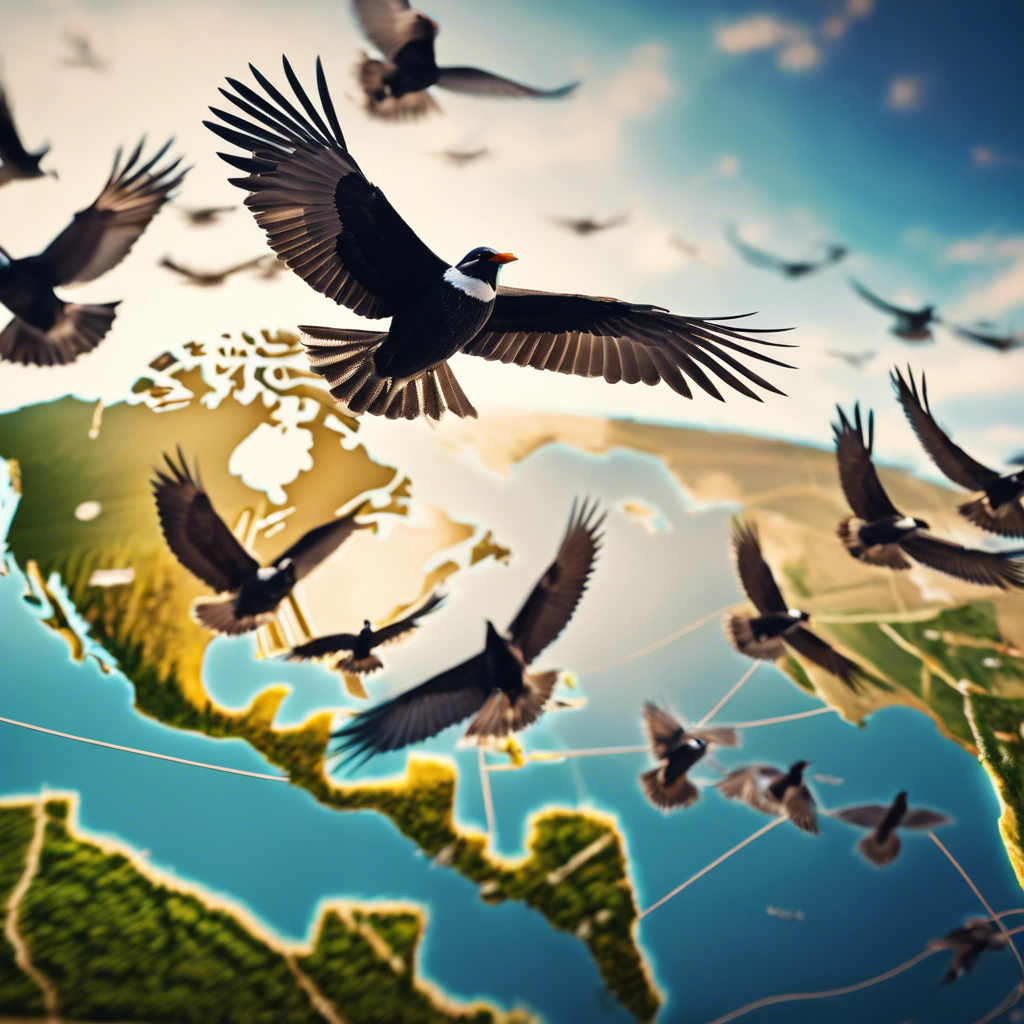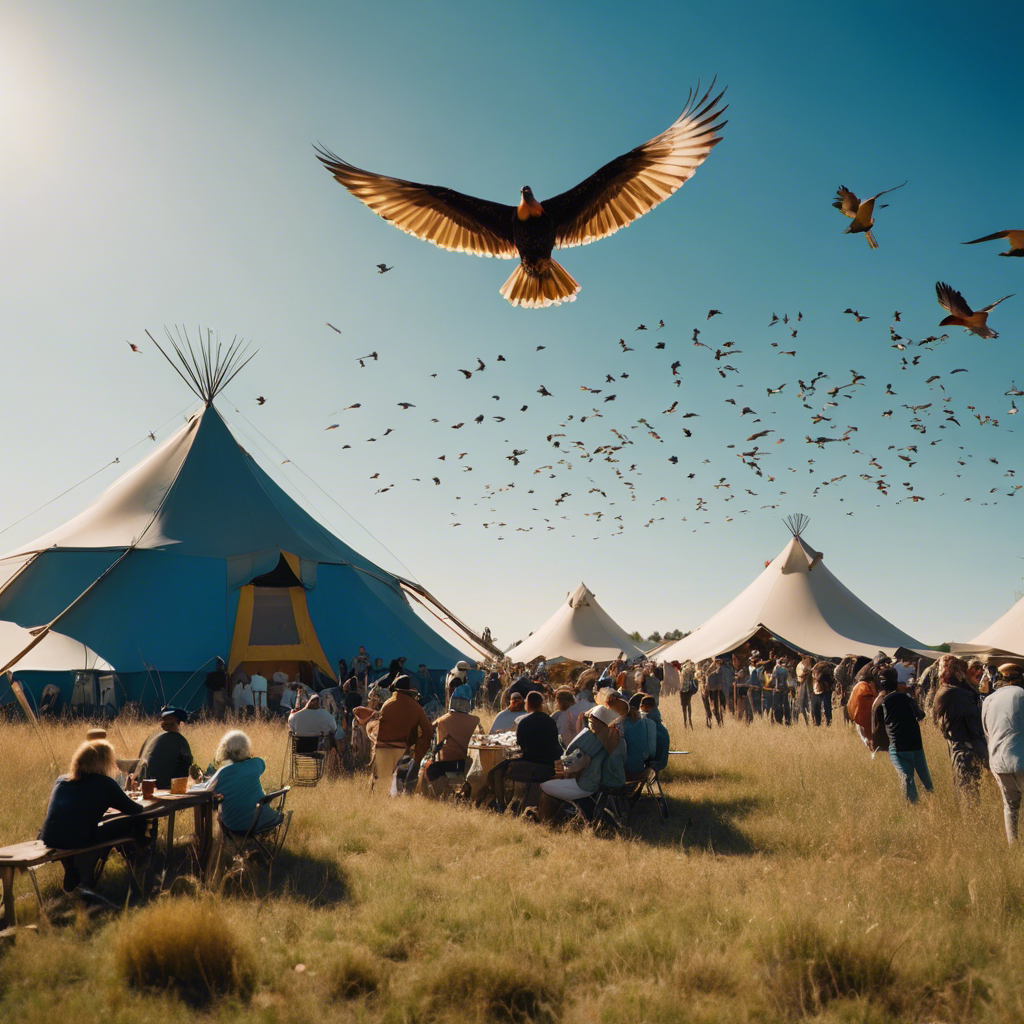As an ornithologist, my experience with North American bird migration is deeply personal. I’ve spent years charting their paths, my heart soaring with the flocks above. I believe their journey is a testament to nature’s resilience.
Once, under a crimson autumn sky, I witnessed a ribbon of geese etching patterns overhead. Their honking was a symphony, each note echoing the intricate dance of survival. This spectacle, a blend of my life’s work and passion, reminds me how these migrations stitch together the fabric of our ecosystems, ever threatened yet persistent.
It’s a narrative of endurance, one I’m devoted to preserving.
Key Takeaways
- Bird migration is a complex behavior influenced by environmental cues, genetics, and learned behavior.
- Migration is driven by the need to find breeding environments and optimize food resources.
- Birds rely on various cues such as celestial cues, magnetic fields, visual landmarks, and potentially olfaction to navigate during migration.
- Conservation efforts, including protecting habitats along migration routes and establishing migratory corridors, are crucial for ensuring the successful migration of bird species.
Understanding Bird Migration

To comprehend bird migration, it’s essential to recognize that this phenomenon is a complex, instinctual behavior pattern governing the seasonal movement of species between habitats.
Migratory birds rely on a combination of environmental cues, genetic predisposition, and learned behavior to navigate their routes, known as flyways.
Advanced bird migration forecasts have become critical tools for ornithologists, utilizing radar technology, weather data, and historical patterns to predict the timing and volume of migrations with remarkable accuracy.
You’ll find these migrations aren’t merely for climatic comfort but also for optimizing breeding environments and food resources.
The precision of these journeys, often spanning thousands of miles, underscores the evolutionary adaptations that enable birds to exploit disparate ecosystems cyclically.
Key Factors Influencing Migration
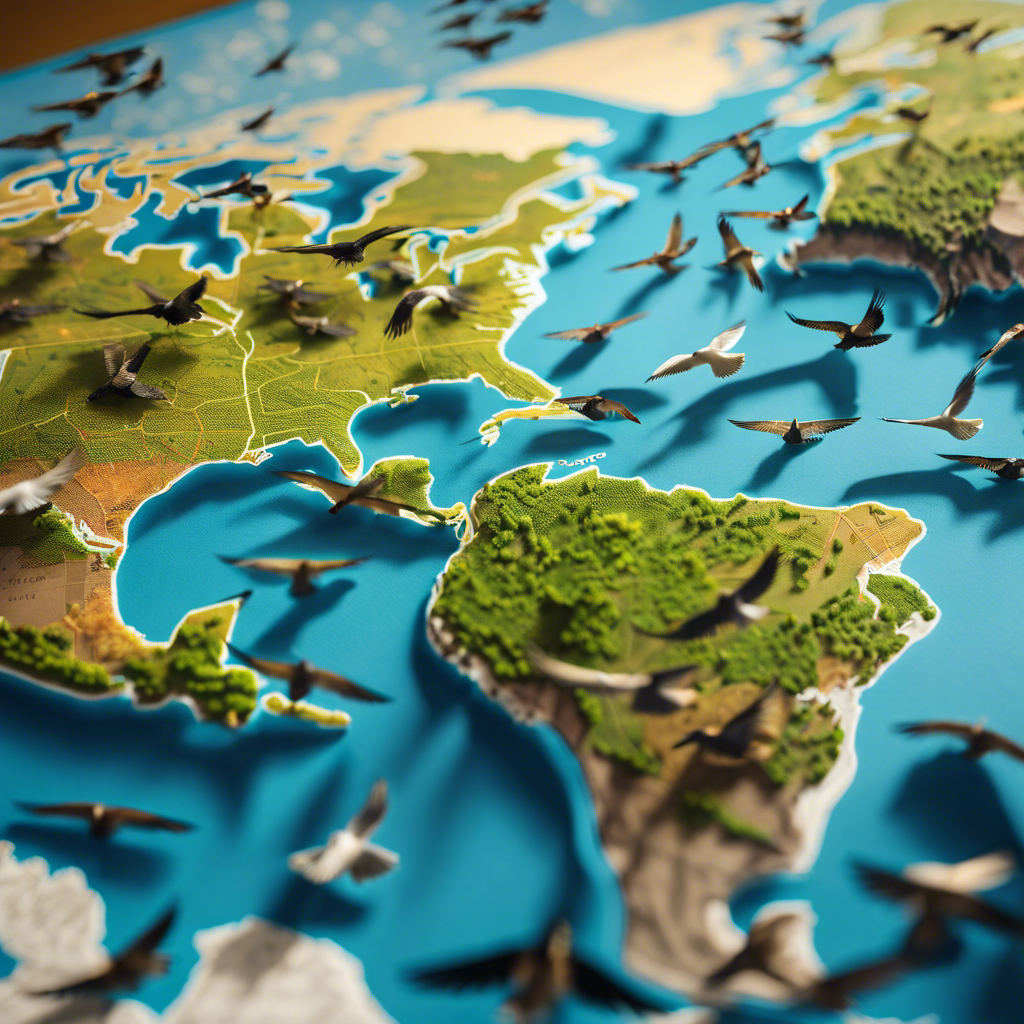
Understanding the complexities of bird migration provides insight into the key factors that influence their remarkable journeys across established flyways. Different migratory species have evolved to navigate vast distances between their breeding and wintering grounds. Here’s an analytical breakdown of what drives these movements:
- Geographic Flyways: Migratory bird species adhere to specific flyways, which are critical for the connectivity between habitats.
- Migration Hazards: The migratory journey is fraught with dangers, including extreme weather and predation, significantly impacting survival rates.
- Navigation Methods: Birds utilize celestial cues and the earth’s magnetic field to orient themselves, alongside visual landmarks and possibly olfaction.
- Conservation of Habitats: Protecting vital stopover and wintering grounds along flyways is essential for the continuation of successful migration patterns.
The Phenomenon of Flyways
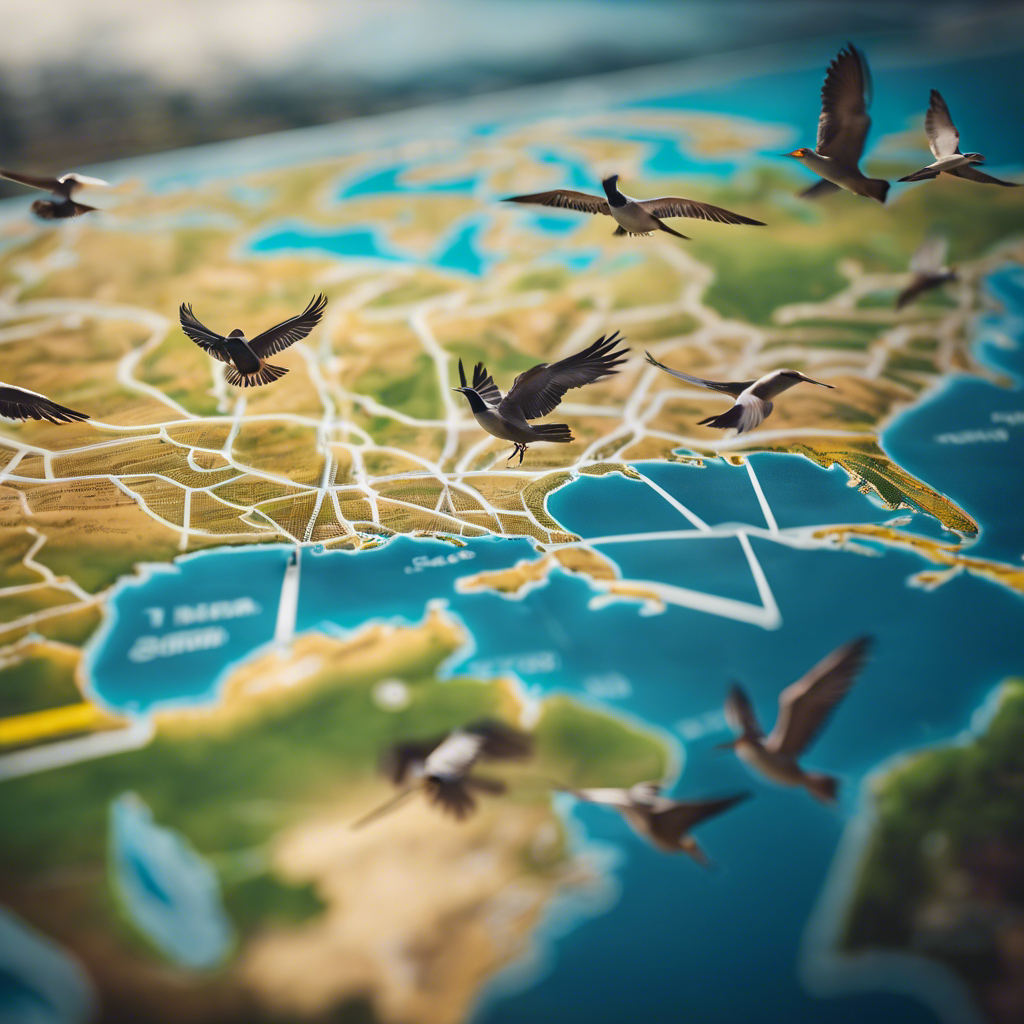
Flyways serve as aerial highways that guide countless birds through their arduous migratory journeys, channeling vast numbers of species along specific geographic routes.
The Atlantic Flyway, stretching from Florida to Greenland, is densely populated by shorebirds and waterfowl. This flyway sees major migratory traffic converging around Southern South Carolina and the Delaware Bay.
Meanwhile, the Mississippi Flyway, from the confluence of the Mississippi and Missouri Rivers to the Gulf of Mexico, acts as a significant funnel for avian migration, providing essential stopover habitats.
The Central Flyway, critical for neotropical migrants, follows the eastern flanks of the Rocky Mountains. Over half of North America’s migratory waterfowl depend on it.
These flyways, each distinct in their ecological significance, orchestrate the symphony of bird migration across the continent.
The Atlantic Flyway Explained
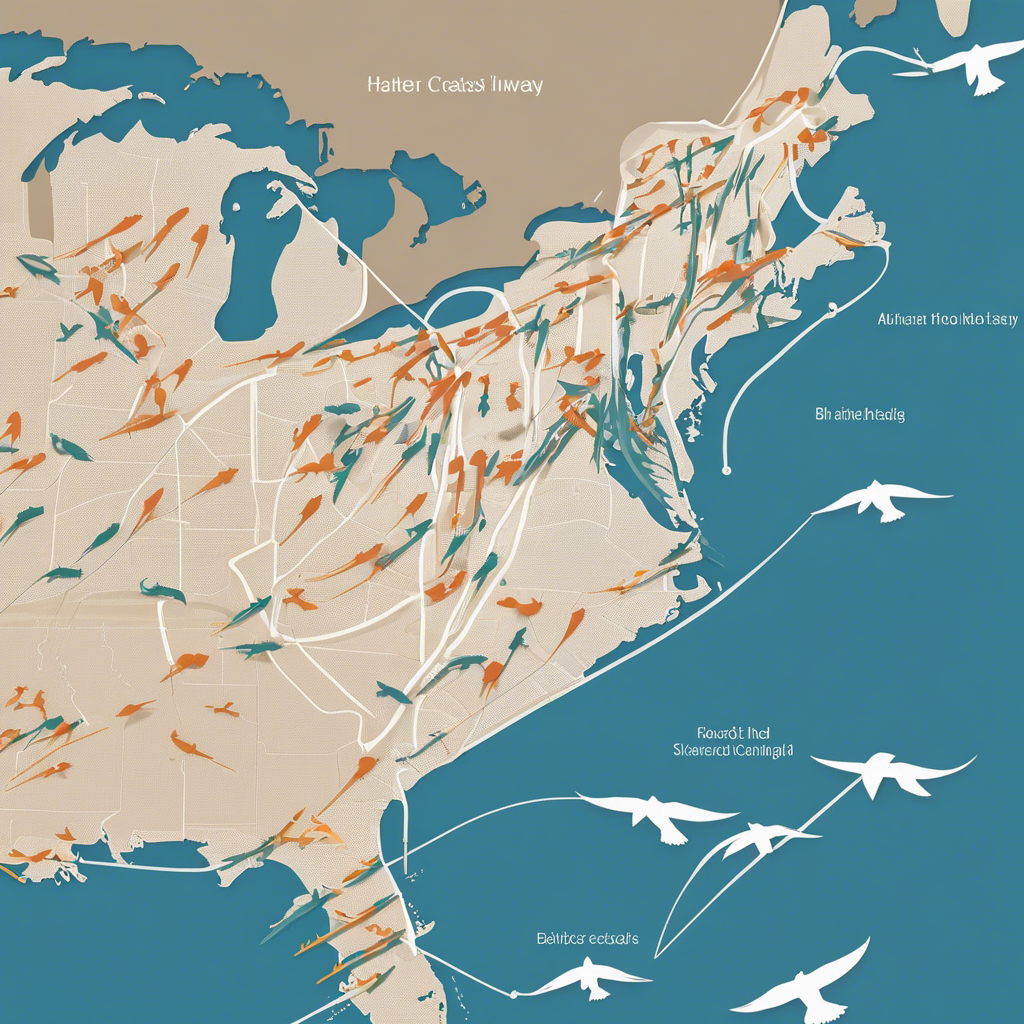
Delving into the Atlantic Flyway, you’ll find it serves as a vital corridor for numerous bird species, from tiny songbirds to large waterfowl, as they navigate the eastern coast of North America during their seasonal migrations. This flyway, stretching from the Arctic tundra to the tropical Caribbean, is a complex network of habitats that migrating birds rely on for survival.
In New Jersey alone, the diversity of ecosystems from coastal wetlands to forests provides critical stopover sites.
Consider these key aspects of the Atlantic Flyway:
- Ecological Significance: Supports a rich biodiversity, including threatened species.
- Geographic Span: Extends from Greenland to South America.
- Human Impact: Urbanization and climate change pose significant threats.
- Conservation Efforts: Initiatives aim to protect habitats and monitor bird populations.
Your understanding of this flyway’s function is critical for its preservation.
Secrets of the Mississippi Flyway
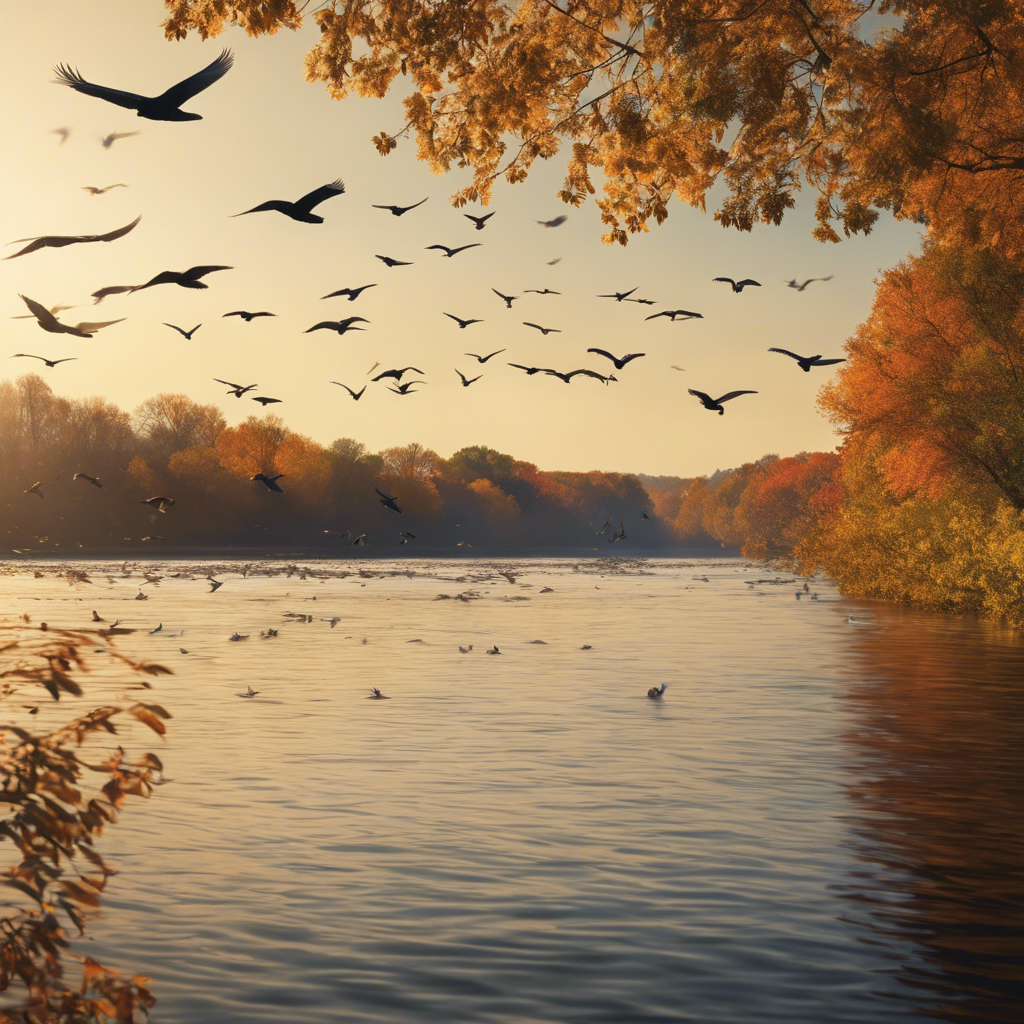
While the Atlantic Flyway plays a crucial role on the eastern seaboard, the Mississippi Flyway offers an equally fascinating journey through the heart of North America for myriad avian species.
This flyway, utilized by approximately 40% of North America’s migratory waterfowl, is a superhighway stretching from the Gulf of Mexico to Canada.
The Platte River, a critical staging area in the United States, provides essential habitat. Here, hundreds of thousands of birds, notably the Sandhill Cranes, converge during spring migration, relying on the river’s shallow waters for roosting and adjacent fields for foraging.
The Mississippi Flyway’s success hinges on the mosaic of wetlands, forests, and grasslands, offering sustenance and rest. These habitats face conservation challenges but remain pivotal in supporting the ecological phenomenon of migration.
Central Flyway Migration Mysteries
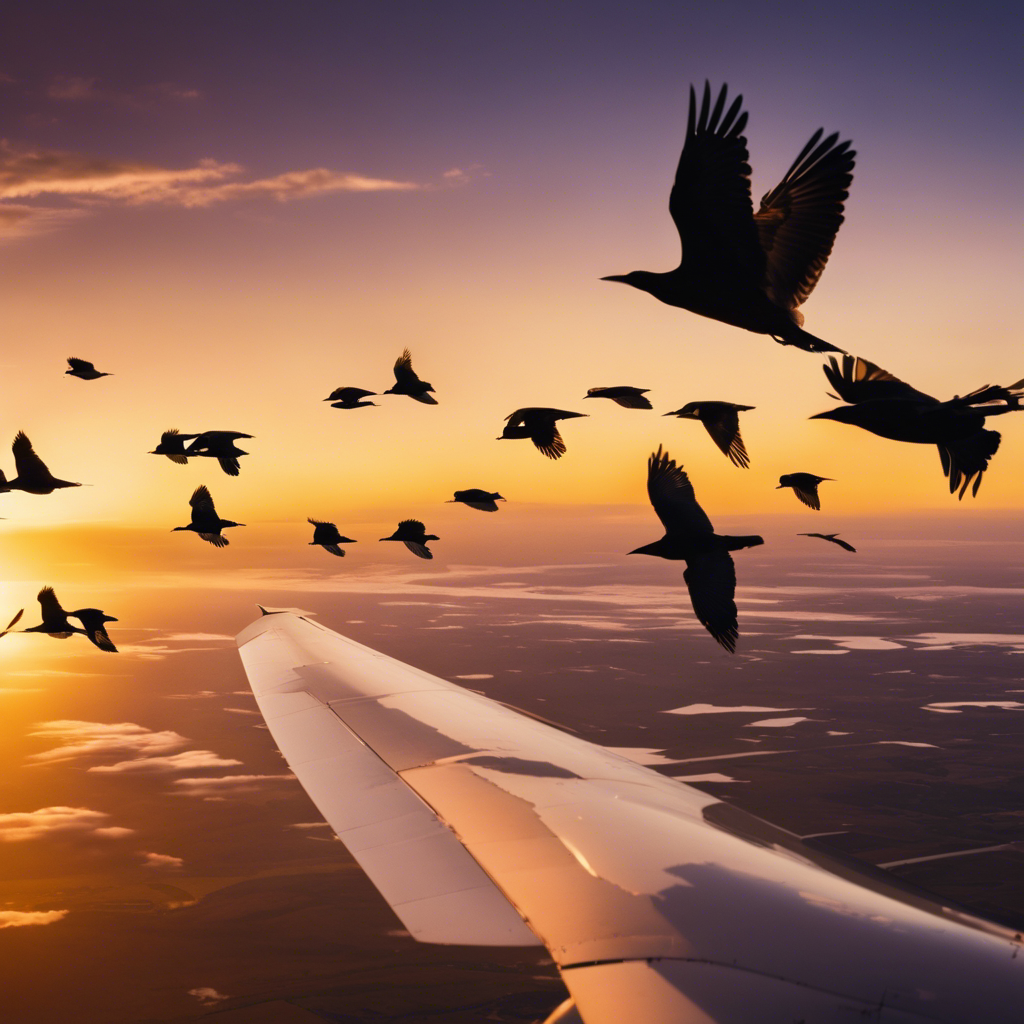
Numerous bird species navigate the Central Flyway, a critical migration route that slices through the Great Plains, yet the intricacies of their journey hold many unsolved enigmas. As you delve into the central flyway migration mysteries, consider these factors:
- Intersecting Flyways: The Central Flyway overlaps with the Pacific Flyway, particularly near the Rocky Mountains. The reasons for species’ selection paths at this intersection remain unclear.
- Topographical Influences: How the varying elevations of the Great Plains to the Rocky Mountains affect migration patterns isn’t fully understood.
- Climate Impacts: Shifts in climate alter habitats and food availability, thus potentially redefining migratory routes and schedules.
- Navigation Mechanisms: The precise methods birds use to navigate these vast distances, including how they might compensate for alterations in the landscape, are still being unraveled by researchers.

Building on the mysteries of the Central Flyway, the Pacific Flyway presents its own set of navigational hurdles for species like the Western Tanager and Townsend’s Warbler, which must contend with vast oceanic expanses and varied terrain from Patagonia to Alaska. As North American birds traverse this route, they encounter ecological barriers along the Pacific Coast that demand precise navigational acumen, particularly during spring and fall migrations.
These birds rely on a network of critical habitats, including stopover sites like Grays Harbor National Wildlife Refuge, to rest and refuel. Yet, the Pacific Flyway’s challenges are amplified by the scarcity of suitable stopover habitats. Flyway Rule-breakers, such as Blackpoll Warblers, illustrate adaptations to these obstacles, modifying their migratory paths to optimize energy expenditure and survival.
Adapting to Climate Change

As climate change reshapes ecosystems, migratory birds must adapt their behaviors and routes to ensure survival in an increasingly volatile environment. To navigate these challenges, they rely on a variety of strategies:
- Habitat Conservation: Organizations like ABC are creating BirdScapes to preserve crucial migratory bird habitat along flyways.
- Resource Utilization: Birds adjust migration timing based on the availability of food and nesting sites, which are affected by climate change.
- Route Alteration: Changing weather patterns and habitat disturbances may force birds to modify traditional flyways.
- Adaptive Breeding: Birds might adapt their breeding schedules in response to shifting climate conditions, ensuring their offspring have better survival prospects.
These measures are essential for the protection of migratory birds as they confront the realities of a changing climate.
Human Impacts on Bird Migration
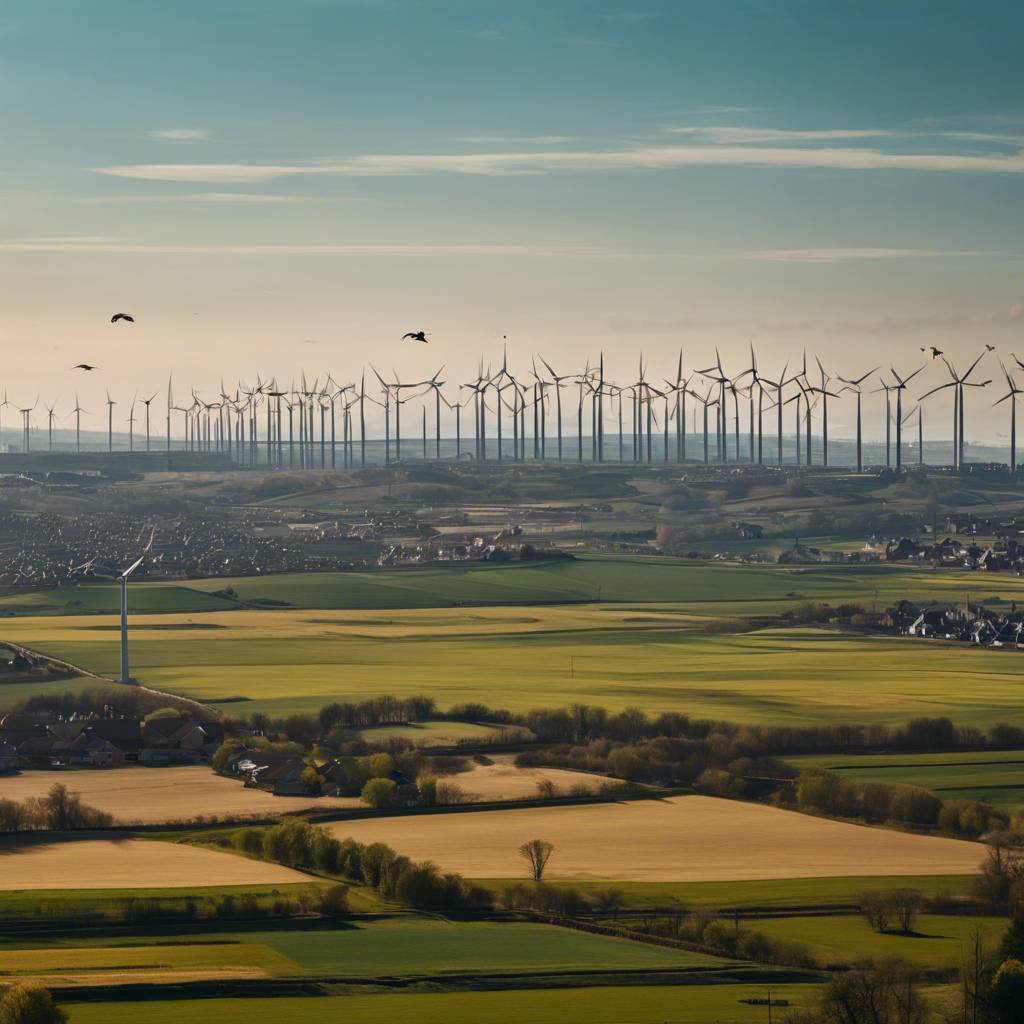
How do human activities influence the intricate patterns of bird migration?
Every year, billions of birds navigate across continents, but human impacts on bird migration are increasingly disruptive. Habitat loss from deforestation and urbanization forces birds to alter traditional routes and critical stopover points. Climate change compounds these issues by shifting food availability and nesting sites, which can alter migration timing and pathways. Moreover, light pollution emanating from cities and towers disorients migrants, causing fatal collisions. These collisions with buildings are a profound threat.
To protect birds, conservationists have initiated measures like the Lights Out project, aiming to reduce nocturnal illumination. Establishing BirdScapes and preserving stopover habitats are also pivotal in mitigating these human-induced challenges, ensuring the continuation of these natural phenomena.
Conservation Efforts and Successes
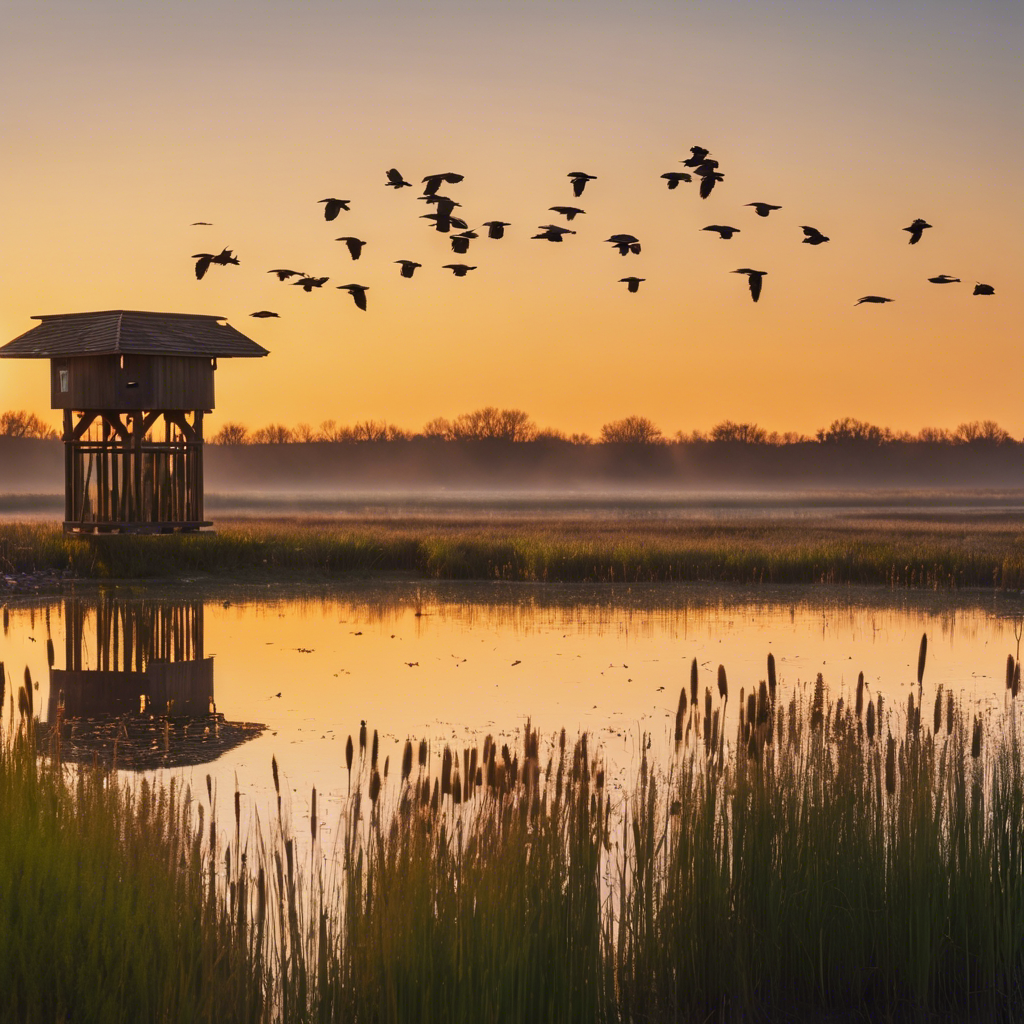
Recognizing the adverse effects of human activity on bird migration, conservationists have implemented numerous successful strategies to safeguard these avian journeys. Your understanding of these efforts is crucial, as they represent a beacon of hope for species like the Long-billed Curlew.
Here’s how these strategies have unfolded across North America:
- Establishment of protected migratory corridors that reduce habitat fragmentation and ensure safe passage.
- Implementation of bird-friendly agricultural practices to preserve food sources and nesting grounds.
- Engagement in international partnerships, like the Migratory Bird Treaty, to provide cross-border protections.
- Application of advanced tracking technologies to monitor populations and adapt conservation strategies effectively.
These conservation efforts and successes demonstrate a commitment to preserving the delicate balance of North America’s ecosystems, ensuring that migratory birds continue to grace our skies.
Frequently Asked Questions
What Are the 4 Flyways of North America?
You’re asking about the four flyways: they’re the Atlantic, Mississippi, Central, and Pacific. Each serves as a critical corridor for various migrating bird species across different parts of the continent.
What Are the Migratory Birds Routes in the Us?
You’ll find that migratory birds in the US follow specific routes known as flyways, which include the Atlantic, Mississippi, Central, and Pacific paths, each supporting diverse avian populations during their seasonal movements.
What North American Bird Has the Longest Migration?
You’re right to be impressed; the Arctic Tern has the longest migration, flying 44,000 miles annually. It’s a journey that takes stamina and precision, unmatched by any other North American bird.
Is There an App That Shows Bird Migration?
You’ll find apps like eBird and BirdCast useful for tracking bird migrations. They offer detailed, real-time data, allowing for an analytical look at species movements influenced by environmental factors.
Conclusion
In conclusion, you’ve seen how North American bird migration is a complex interplay of biology and ecology.
Flyways like the Atlantic and Mississippi are vital corridors, yet they face navigation challenges and climate pressures.
Your understanding of these patterns highlights the impact humans have on avian journeys.
It’s clear that conservation successes hinge on our actions to preserve these natural pathways, ensuring the resilience of migratory species in an ever-changing environment.

An avid ornithologist, zoologist and biologist with an unwavering passion for birds and wild animals.
Dr. Wilson’s journey in ornithology began in childhood and led him to obtain a Ph.D. in Ornithology from the prestigious Avian Research Institute. He has worked closely with renowned experts in the field and conducted extensive research and field studies globally.

